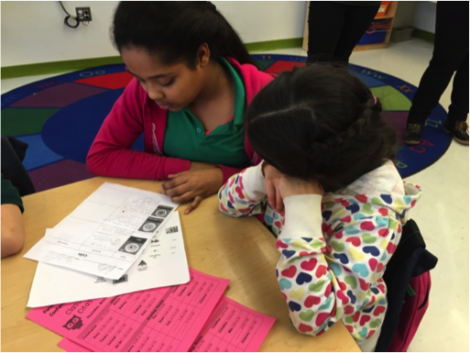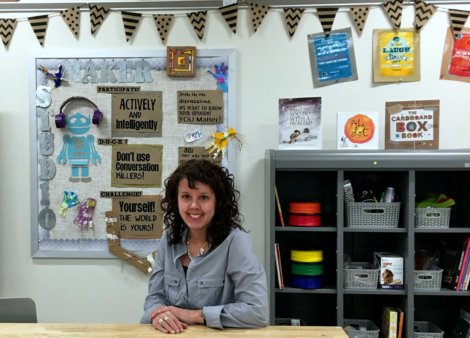
Integration of Related Readings into a Dual Language Classroom
Posted by cemignano on
We’re back with August’s CBE of the Month, Ruby Sheets, to share some of her integration strategies for using BrainPOP’s Related Readings in a dual language classroom. If you missed Ruby’s post earlier this month, be sure to check it out to learn more about her background as an international Certified BrainPOP Educator in São Paulo, Brazil.
As a bilingual special educator, I am always looking for ways to find access points to the same content for students with various skill levels in language, reading, processing… and the list goes on. Any lesson that has a student read, write, listen and speak all within 45 minutes leads to higher engagement, retention of content, language development and increased moral. When I started co-teaching with a teacher who held Science Article Fridays, in which every student read the same article and took notes, I knew BrainPOP Related Readings and Partner Reading could help jazz things up.
Partner Reading has many versions. What I do is have pairs of students read one of four different Related Reading articles from the same source video. Each person receives a paper with the article on one side and a graphic organizer to collect main ideas from all of the articles on the opposite side. On the article side, there are boxes beside each paragraph. Together, the pair follows these steps:
- READ Partner A reads a paragraph aloud
- SPEAK/LISTEN Partner B states the main idea of the paragraph
- SPEAK/LISTEN Together partners come to a consensus on the main idea
- WRITE Individually, the partners write the main idea in the box next to the paragraph
- Partners switch roles (reading vs. stating the main idea)
- Continue until the whole article has been read
Once all groups have finished, one person from each article group shares out their main ideas to the class, so there are four speakers. Other people who read the same article chime in if they think something important was left out or had a different perspective. The class takes notes, writing in the provided graphic organizer on the back of the paper.
These lessons are great for:
- Introducing a new topic
- Covering mandated topics in a creative way
NYC public schools have a required HIV/AIDS curriculum each year
- Developing students’ abilities to talk about a topic before they need to write about it
An extension is to have students explain their notes to younger students. Second graders are a great age for this because they are mature enough to listen and ask questions. If a sixth grader can get a concept across to a second grader in spoken words, they are definitely ready to write about it. Also, second graders are intimidated by sixth graders, so they tend to behave. Sixth graders aren’t intimidated by second graders and usually think they are cute. As a result, they are more likely to speak than they would be in front of their peers, especially when trying out a language other than their home language.
I have used this method for Related Readings in both English and Spanish. For students strong in one language but not the other, I often have them:
- watch the source video in the other language or look at the same article in the other language, at another time (It is a great benefit that BrainPOP materials are available in multiple languages, but not side by side. That way students can use materials in another language for support with the content, but still get a push of using the text in the target language on a separate occasion).
- pair up with a strong bilingual student for translating help during the partner reading process but have them share out in the target language for that lesson
- give them a simpler article (such as the statistics articles, seen here under Cells)
The Related Readings do not have Lexile Levels (a dream for the future maybe), but a quick read through gives a sense of the level. Some of them are very complex, which is great for higher level students. They highlight interesting historical, scientific or mathematical perspectives on a topic that I would not have thought to introduce myself. The greatest advantage is that they are always kid-appropriate and relevant, and often available in multiple languages: a bilingual teacher’s dream.
















